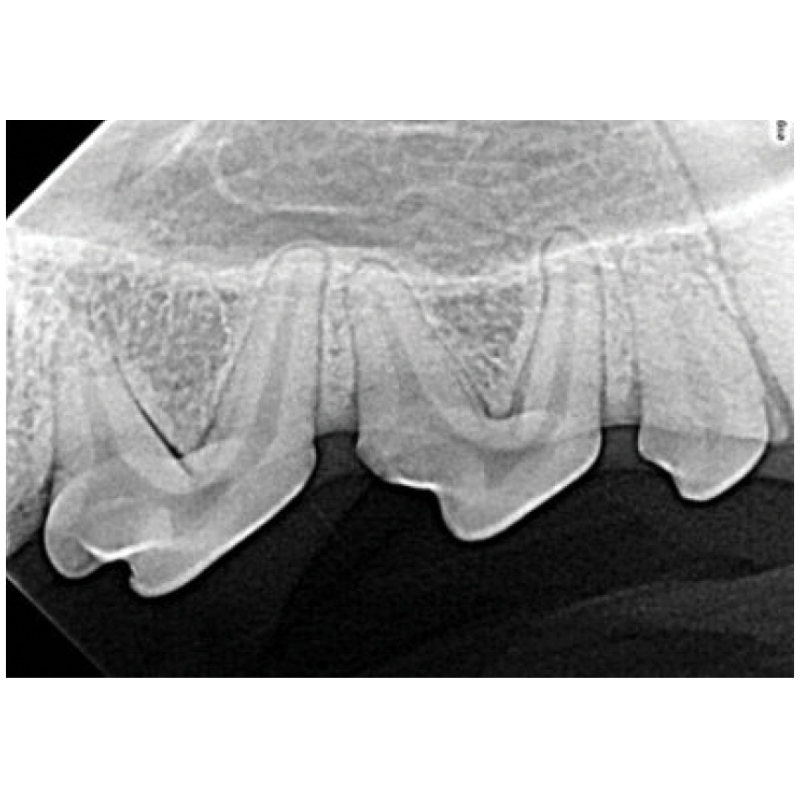Step One. Identify the correct teeth.
The third image taken is of the upper premolars 105, 106 and 107. Highlighted on the dental chart and outlined in the picture below. 205, 206 and 207 are opposite in the maxillary arcade and the same technique is applied.

Step Two. Placing the sensor.
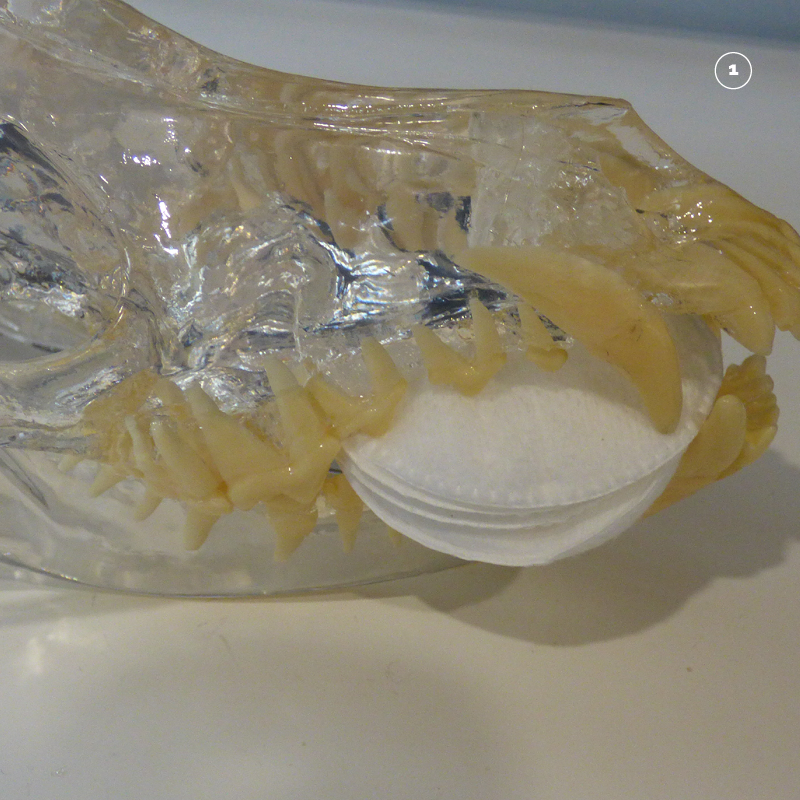
Make a cradle to hold the sensor in place by placing some swabs behind the lower canine tooth.

Place the sensor in the mouth so that is longways rostral to caudal with the sensor behind the upper canine so that the cusps of teeth 105, 106 and 107 are on the outside edge of the sensor.
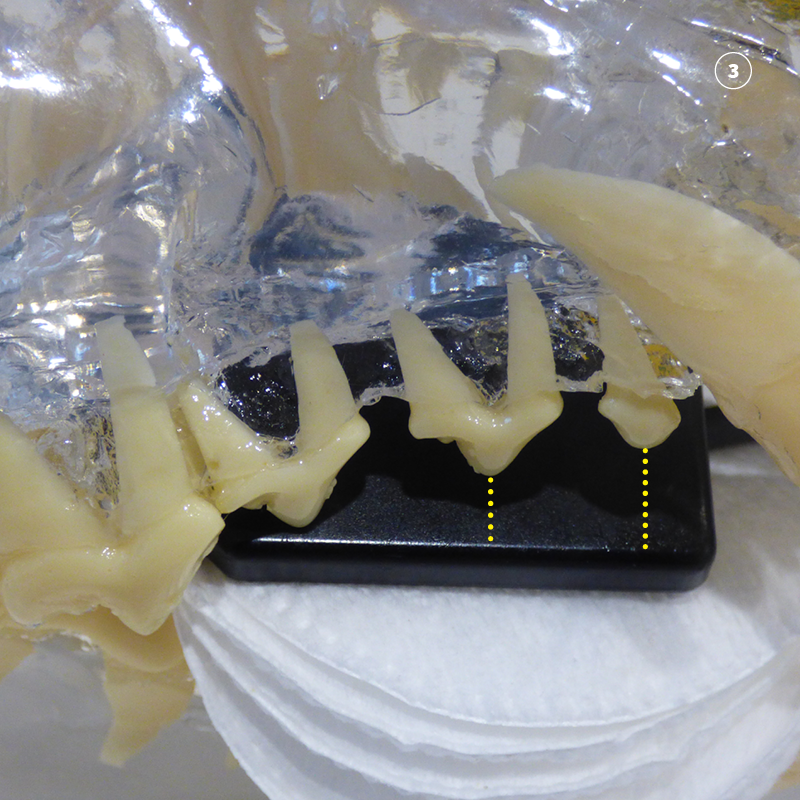
Note that 105 and 106 may not touch the sensor but are still in line with its outside edge.
Step Three. Position the tube head opposite the sensor so that the beam covers the sensor.
Place the cone opposite the sensor. Make sure that the entire cone covers the sensor. See through cones make this easy as you can look through the cone to see the sensor and teeth. Sometimes its necessary to retract the lips to see the sensor in the open mouth.
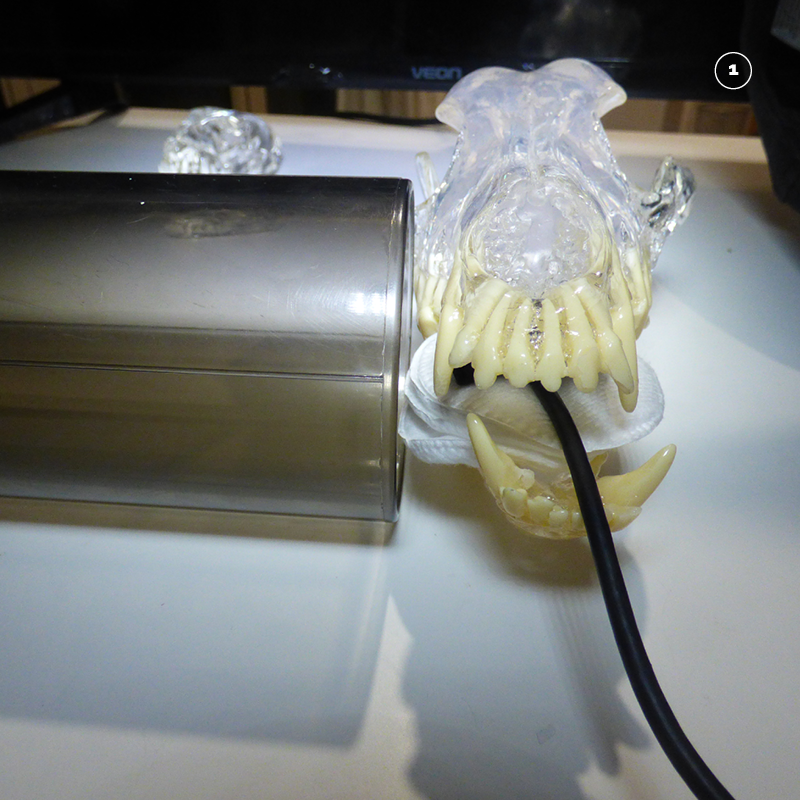
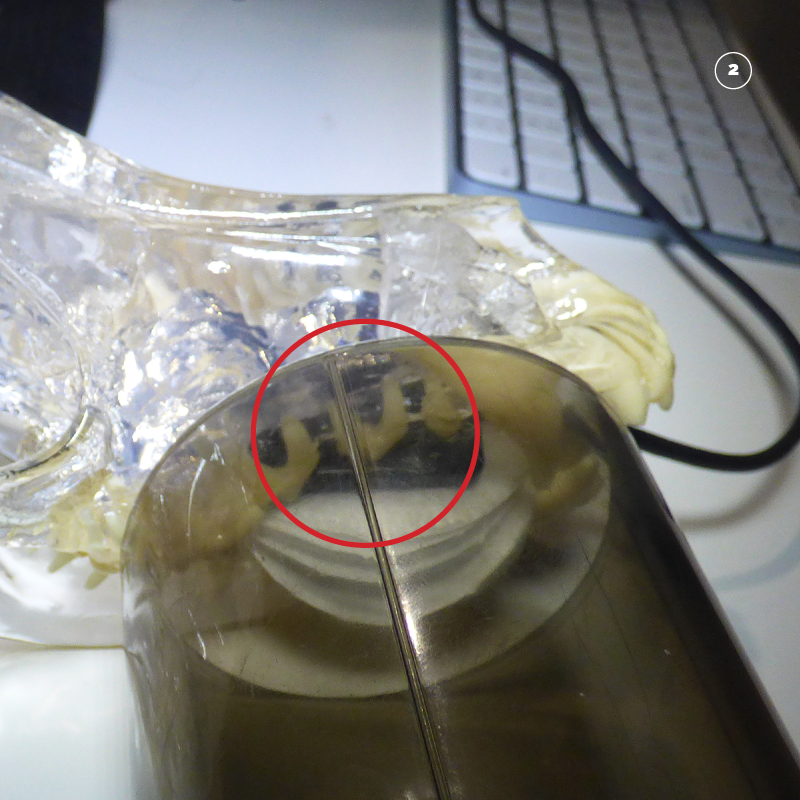
Step Four. Roll the tube head to the correct angle.
As the beam is already aligned with the sensor. Calculate the correct angle using the bisecting angle technique and roll the tube head up to the right position.
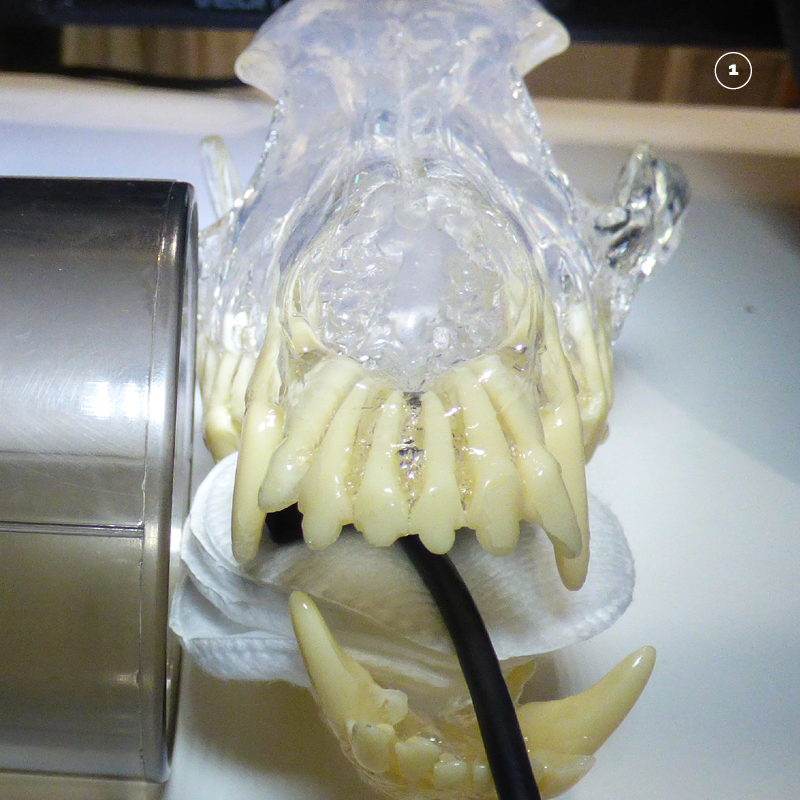
Start by visualising the view from a rostral aspect.

Visualise a line that moves along the sensor from the outside left of the mouth inwards. This is the short side of the sensor. Marked in yellow.
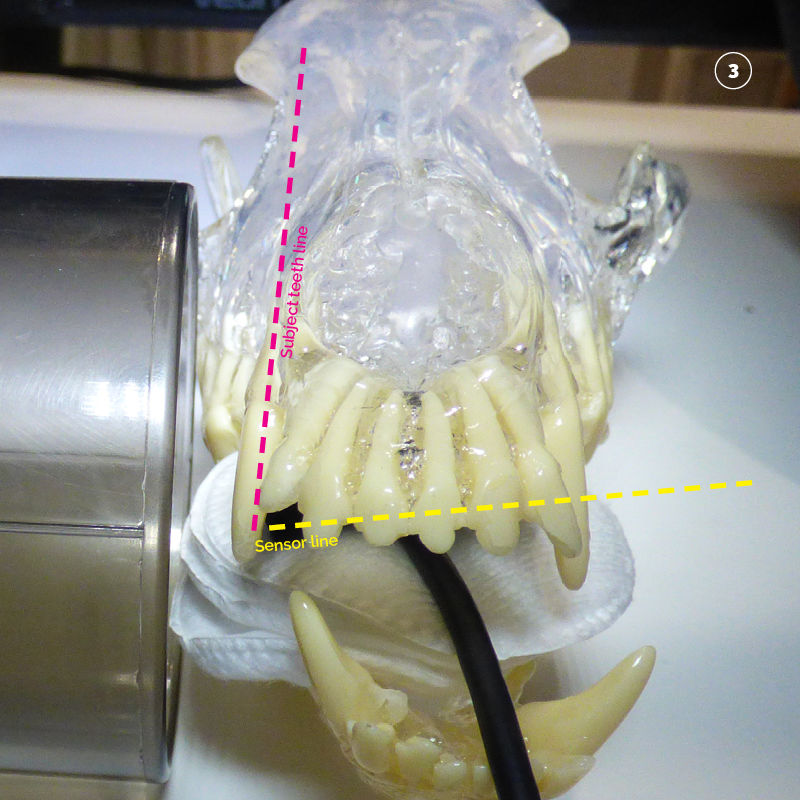
Next visualise a line through the centre of the teeth from cusps of the crown to apex of the roots. Marked in Pink. It is very similar to the angle used in 104 to mark the tooth.
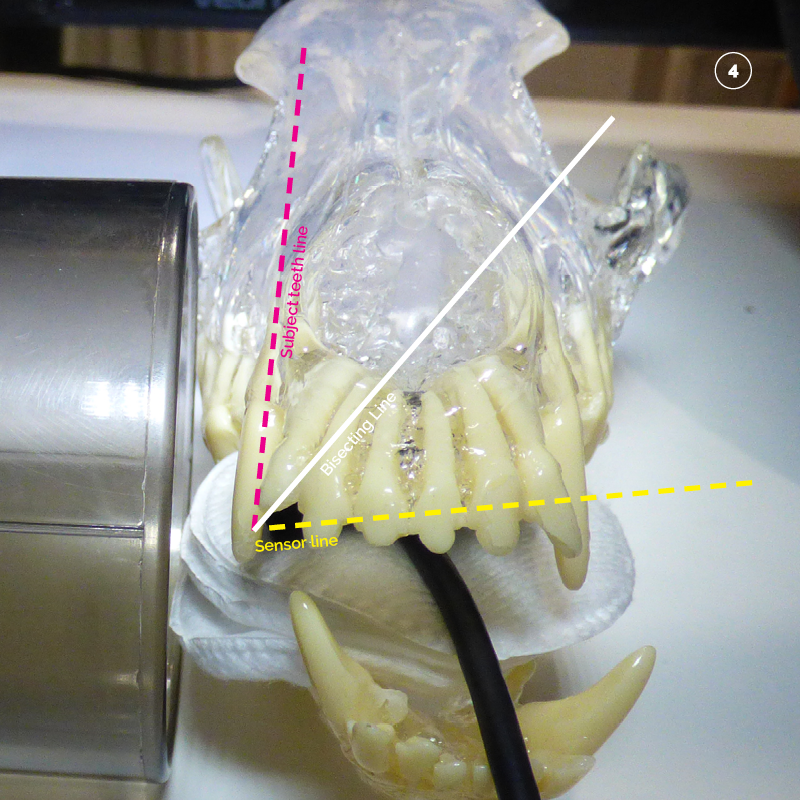
Bisect (half) the angle between the yellow sensor line and the pink tooth line.
Marked in white.

The correct angle is then calculated as perpendicular (90 degrees to) the white line that bisects (half’s) the angle of the sensor line (yellow) and the tooth line (pink). Marked in green.
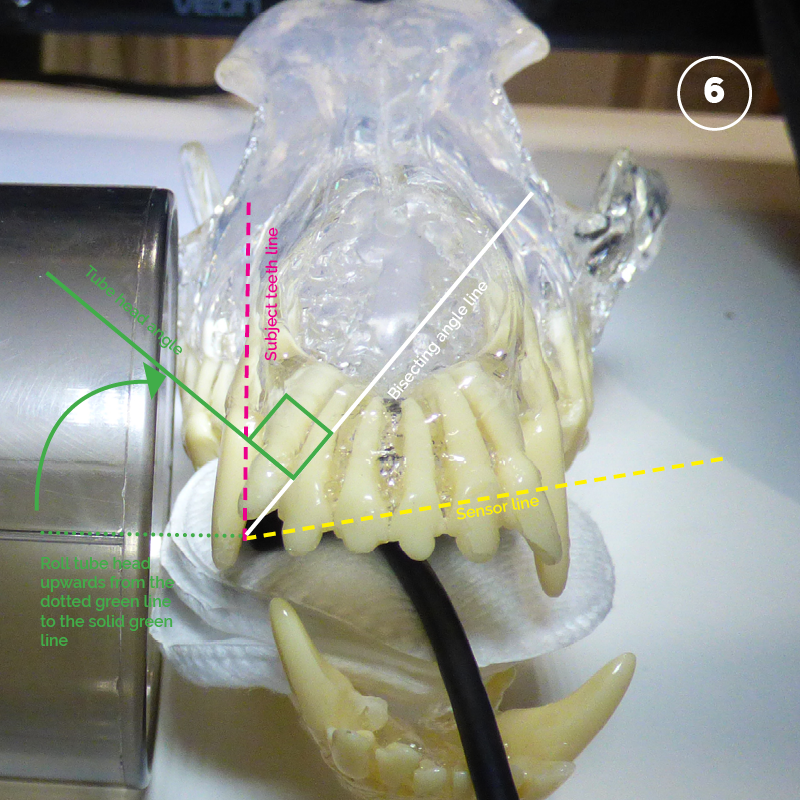
The tube head can then be rolled up to the correct angle.
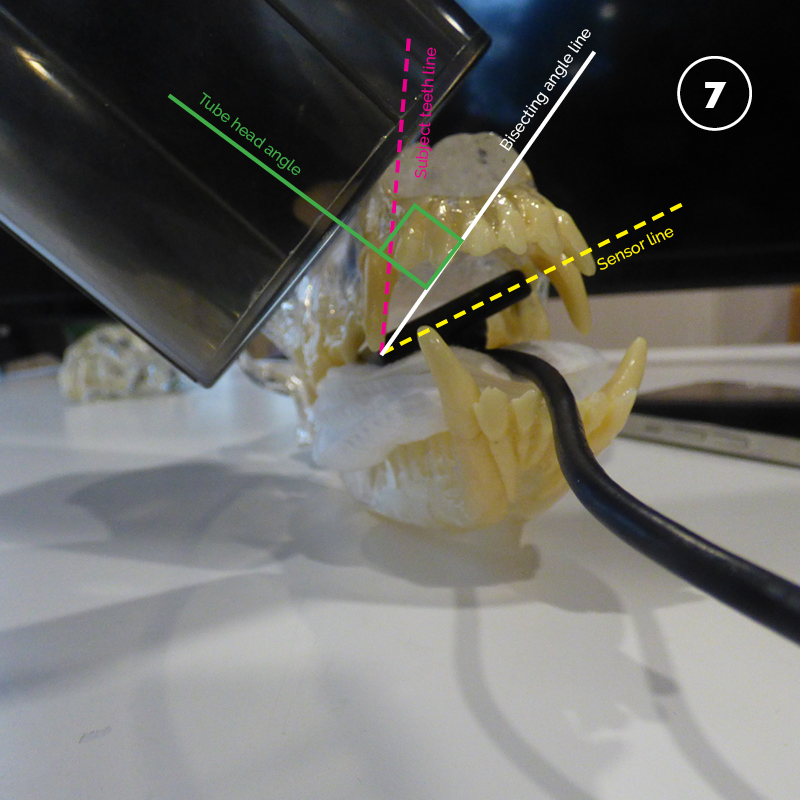
Tube head rolled up to the correct angle.
Step Five. Tube head orientation to patient mid-line.
The standard orientation for upper canine teeth is perpendicular to the mid-line.

Step Six. Radiation Factors.
The standard factors with a digital sensor are as follows:
| Patient Size | Location | KV | MAS |
| <=15 Kg | Maxillary Premolars 105, 106 and 107 | 60 | 0.125 |
| >15 Kg | Maxillary Premolars 105, 106 and 107 | 60 | 0.160 |
